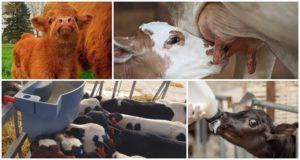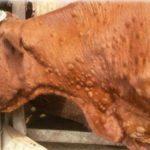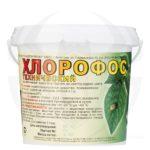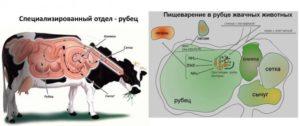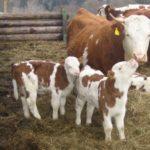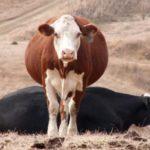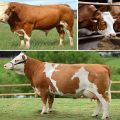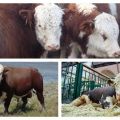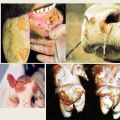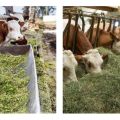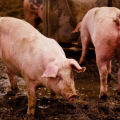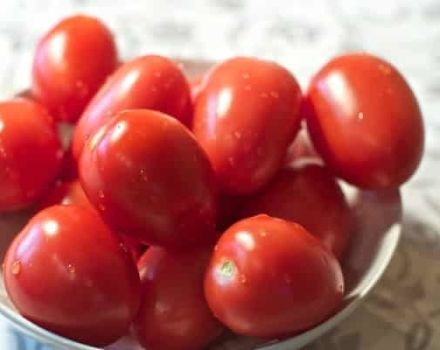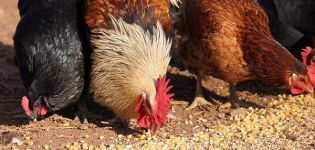Symptoms of lice in cattle and what the parasites look like, what to do for treatment
Lice are a common problem in cattle, which, in the absence of diagnosis and treatment, causes a lot of inconvenience to animals and their owners. The disease occurs as a result of damage to small whitish insects, a dangerous high risk of subsequent infection of cows and calves with various viral and fungal pathologies. An animal affected by head lice does not require quarantine conditions, but it is important to conduct therapy for each head of cattle that has come into contact with the infected.
Causes of lice in cows
Cows and calves can have different types of lice - adult animals are affected by insects of the order Haematopinus, and calves by the calf louse Linognathus vituli. The most common fleas in a cow are:
- the short-headed louse is the largest individual of its kind, reaching 4 millimeters in length;
- long-headed veal louse - it is not easy to notice it on the body of an animal, since the length of the louse is only 2 millimeters;
- the hairy louse is the smallest parasite that affects cattle, males reach a length of 1.5 millimeters, and females - only 1 millimeter.
The source of head lice is infected cows and calves, if their hair already contains parasites at different stages of the life cycle. The spread of insects occurs with close contact of livestock (crowded housing, during mating).
Livestock can also pick up lice indoors, if previously infested cows were kept in it. Often, parasites are transmitted through livestock care items (poor sanitary and hygienic conditions).
The risk of developing lice in cows and calves in the winter season increases, since during stall keeping, the immunity of cattle decreases, a lack of vitamins develops, and the skin during this period of the year is covered with a thick coat of wool. In summer, with grazing, the number of lice in cattle is sharply reduced due to improved feeding, increased immunity, insolation and dry air.
Head lice symptoms
The louse pierces the skin of the cow, damaging the capillaries, injects fluid into the wound opening, which interferes with the normal blood clotting process and contains toxic substances. Due to the constant crawling of lice over the body and massive damage to the skin, animals become aggressive and excited, or, conversely, lethargic. Against the background of severe itching, cattle eat poorly, lose weight, and increase the risk of other systemic diseases.
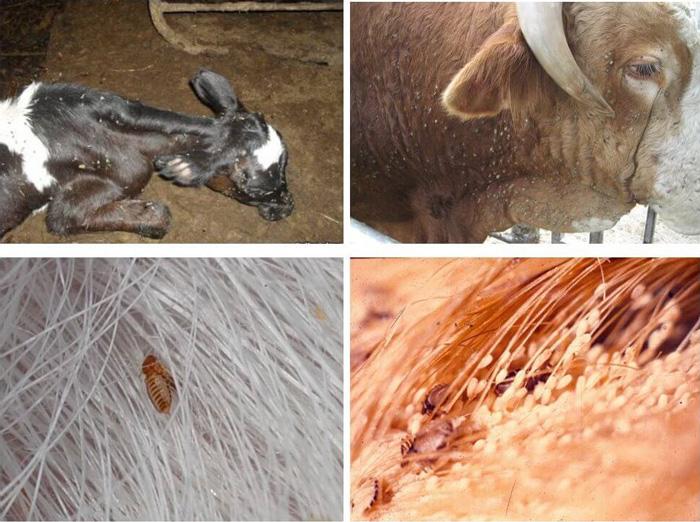
Lice in a cow look like wingless dark insects with a thick outer shell; if you look closely at the hairline in its thickness, you can see white eggs of parasites - nits.They are firmly attached to the wool, it is difficult to remove or shake off the nits, reach 1 millimeter in diameter, are more often located on the head, around the neck and horns, and the tail. The main symptoms of head lice in cattle:
- altered behavior - the cow is worried, can jump off abruptly when lying down;
- trembling all over the body - the animal seeks to get rid of itching, constantly rubs against walls, fences and other objects;
- loss of appetite and body weight;
- decrease in milk yield against the background of constant itching and stressful condition of cows;
- the presence of numerous bites on the animal's skin;
- the appearance of anemia in calves, a noticeable lag in physical development.
In the most affected areas of the animal's skin, areas of eczema and boils, nodules and hemorrhages appear. Prolonged combing of itchy surfaces against different objects leads to the fact that the livestock develops cellular infiltration - the sweat and sebaceous glands cannot fully function, which affects the work of the whole organism. The situation is aggravated by the fact that multiple pathogenic microorganisms penetrate into cracks and wounds on the animal's skin.
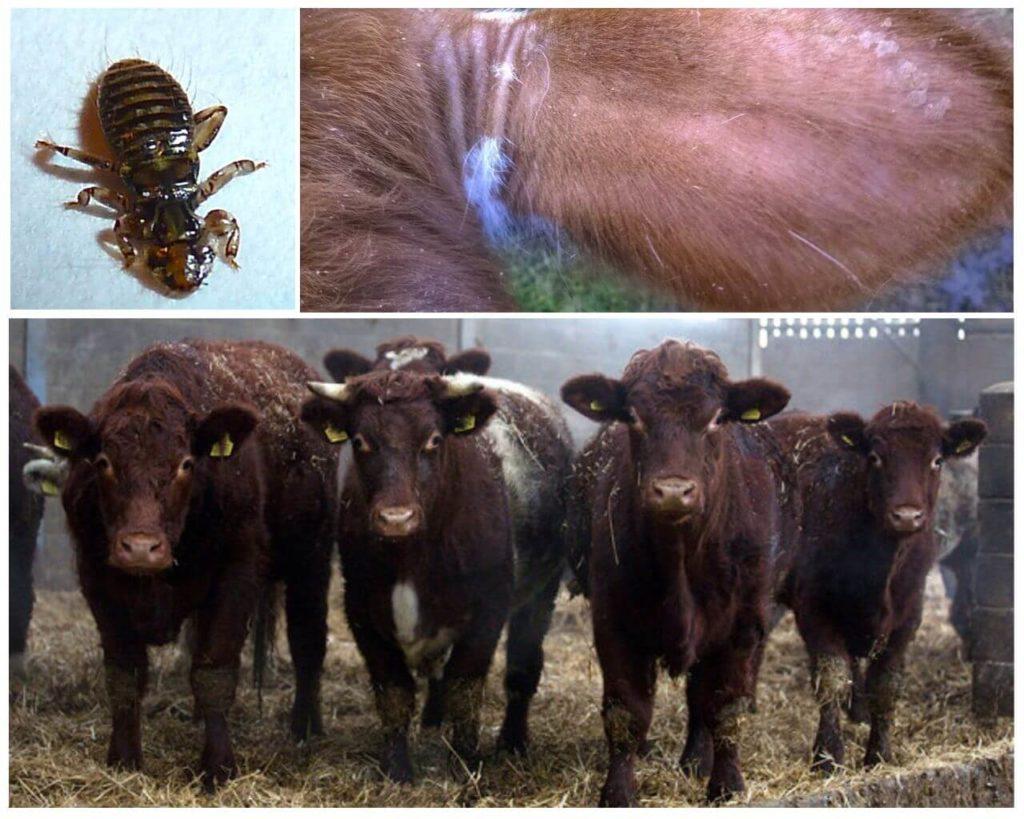
Methods for diagnosing lesions
It is not problematic to detect lice damage in cows - the diagnosis is made on the basis of the clinical picture (constant itching, scratching and multiple bites on the animal's body, skin areas without hair, the development of dermatitis). In the thickness of the cow's coat, you can see both the adult lice themselves and a large number of nits. It is important to distinguish pediculosis in cattle from diseases similar in clinical manifestations - scabies, eczema, trichophytosis.
How to get rid of parasites
To solve the problem of lice in cows, complex methods of therapy are used. If there are several infested cattle heads, treatment of the entire herd is required, since the probability of infection of the rest of the cattle is almost 100%.
Powders
The most common powder for eliminating head lice in cattle is Chlorophos, a contact action insecticide. To remove parasites from cows, powder at a concentration of 80% or 50% must be diluted with water to obtain a 0.5% solution, spray, rub into the skin or water every 2-3 days. Do not process pregnant cows and small calves with Chlorophos.
Aerosols
The most effective sprays for lice are:
- "Ivermek" - the components of the drug help to destroy lice, eliminate itching, pain, accelerate wound healing;
- "Stomazan" - the emulsion should be diluted with water and applied with a spray bottle on the woolen cover (from 500 milliliters to 1.5 liters per animal);
- "Butox" - apply the solution with a spray bottle, rinse off after two weeks, repeat the treatment after seven days;
- "Sebacil" - a means to abundantly saturate the hair of a cow, rinse off with warm water after five to seven minutes;
- "Tsiflunit Flock" is a spray with medicinal and prophylactic properties. It must be applied along the spine to protect against lice for up to a month.
A good effect is given by treatment with a combination of sprays with injectable drugs against parasites - "Ivermectin", "Baymek", "Clozatrem".
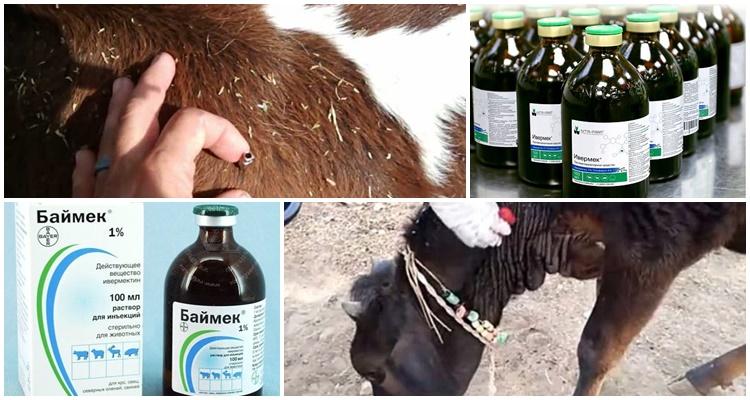
Folk remedies
Effective folk remedies for lice:
- rubbing wood ash into the skin for 14 days;
- washing wool with an antiparasitic broth for at least three weeks - insist wormwood in a liter of boiling water, add hellebore water, tar soap;
- treatment of areas affected by lice with kerosene and birch tar for 14 days.
These methods are safe for young calves, do not affect the taste of milked milk.
How to process the room
The following antiseptic agents are used to spray barns:
- sodium hydroxide;
- slaked lime;
- kerol;
- Chlorophos;
- tarronol.
You can use a sulfuric smoke bomb. During processing, cows must be driven out of the stall.
Prevention measures
The best way to treat head lice and the subsequent addition of concomitant skin diseases to it is timely prevention, which includes:
- control of the quality of livestock nutrition - it is important to balance the diet, include vitamin supplements to strengthen the immune system;
- compliance with sanitary requirements in stalls - regular disposal of manure, replacement of bedding, fencing animals from drafts and dampness;
- periodic treatment with repellents of the favorite habitats of lice - the spine, tail, neck and head of a cow;
- regular treatment of the stall with antiseptic agents;
- routine examinations of a veterinarian, vaccination;
- monitoring the condition of the skin and hair of the animal, behavior, appetite, weight gain and physical development of calves.
The listed measures are not troublesome and expensive, but they will prevent, timely detect pediculosis in cattle and select therapeutic methods in time.
In order to avoid infestation of cattle with lice, it is recommended to observe preventive measures, before the stall period or in the summer, treat the barn with antiseptic solutions. It is important to diagnose and start treating head lice on time, since massive skin lesions of young calves can lead to the death of livestock.
